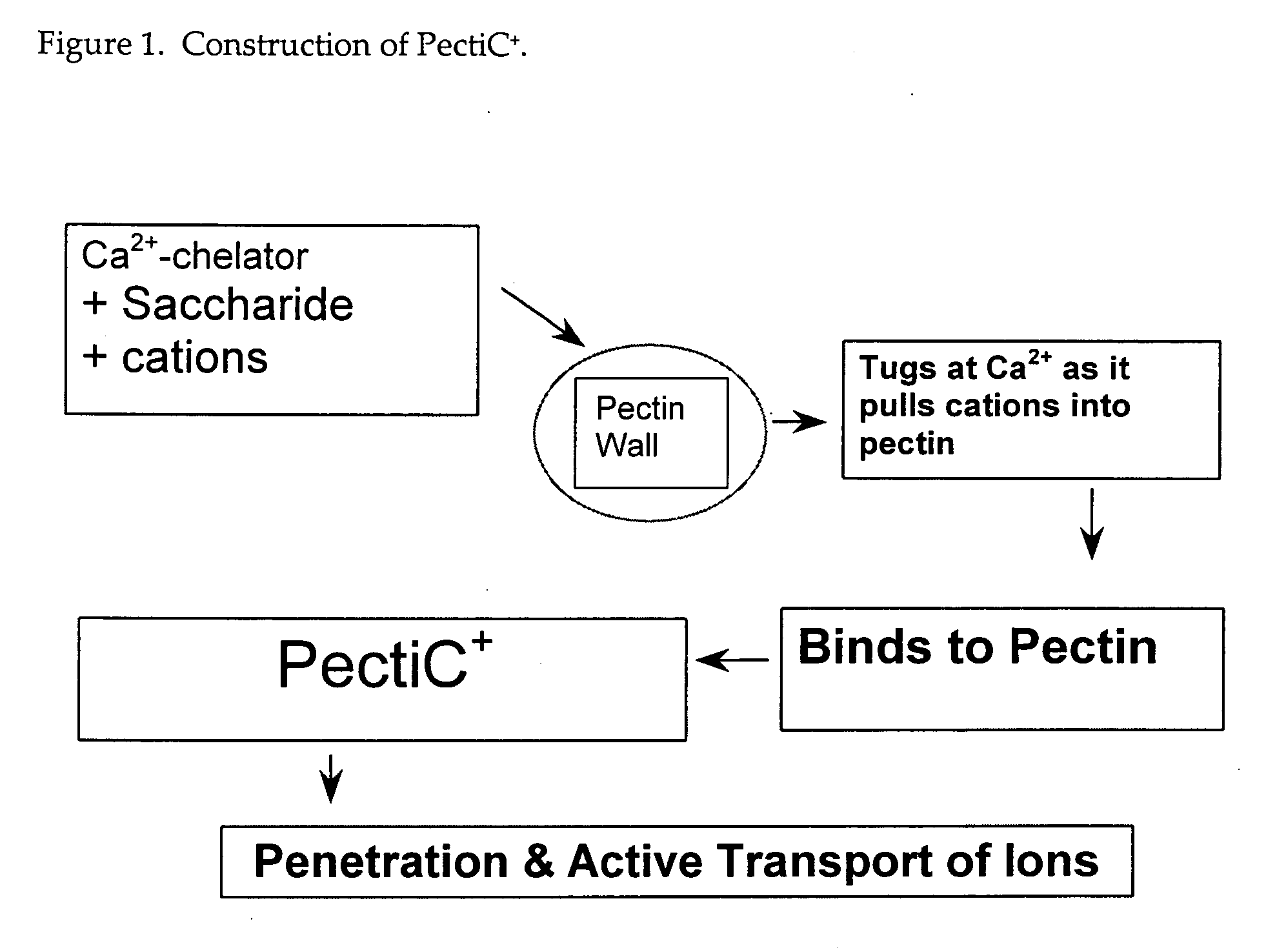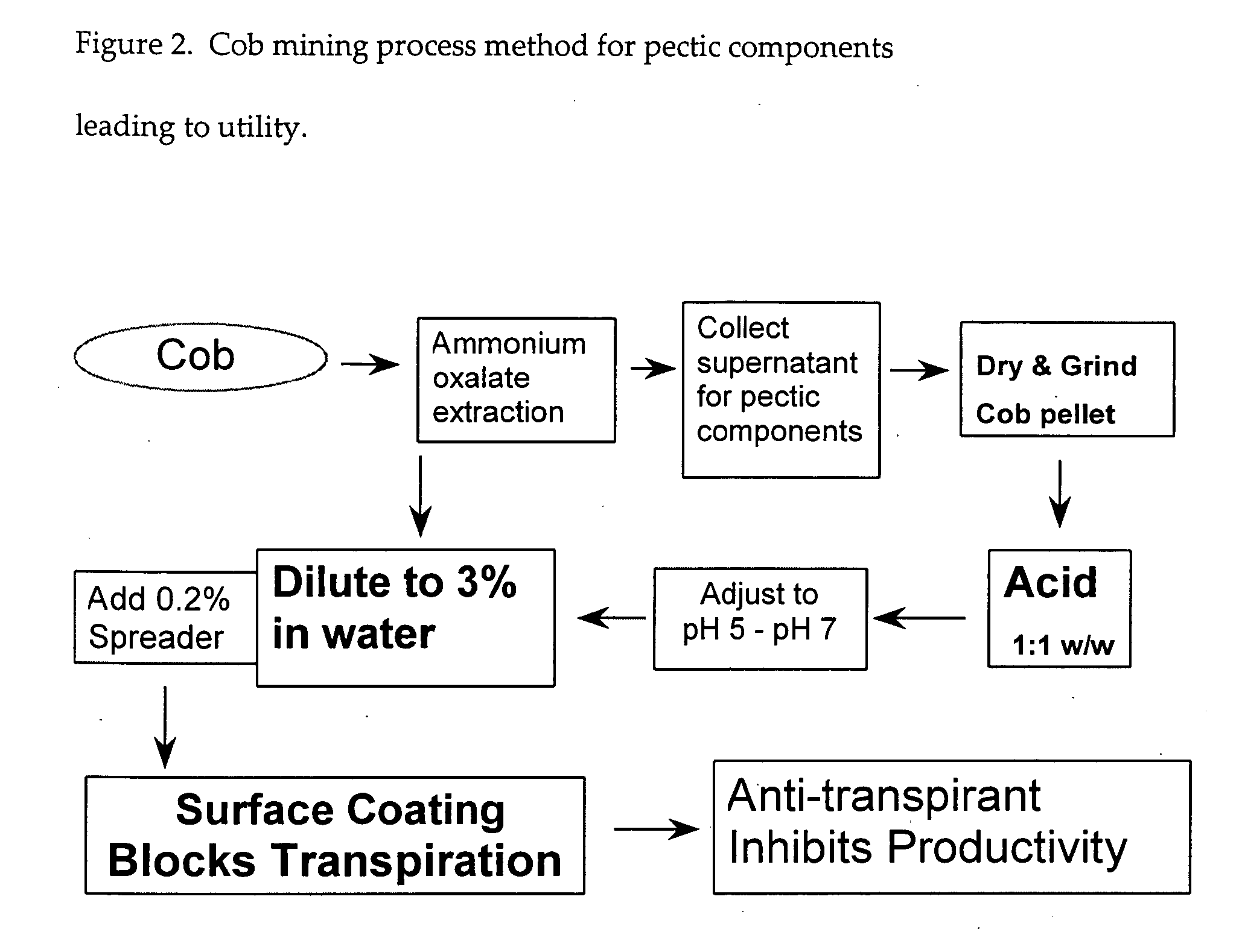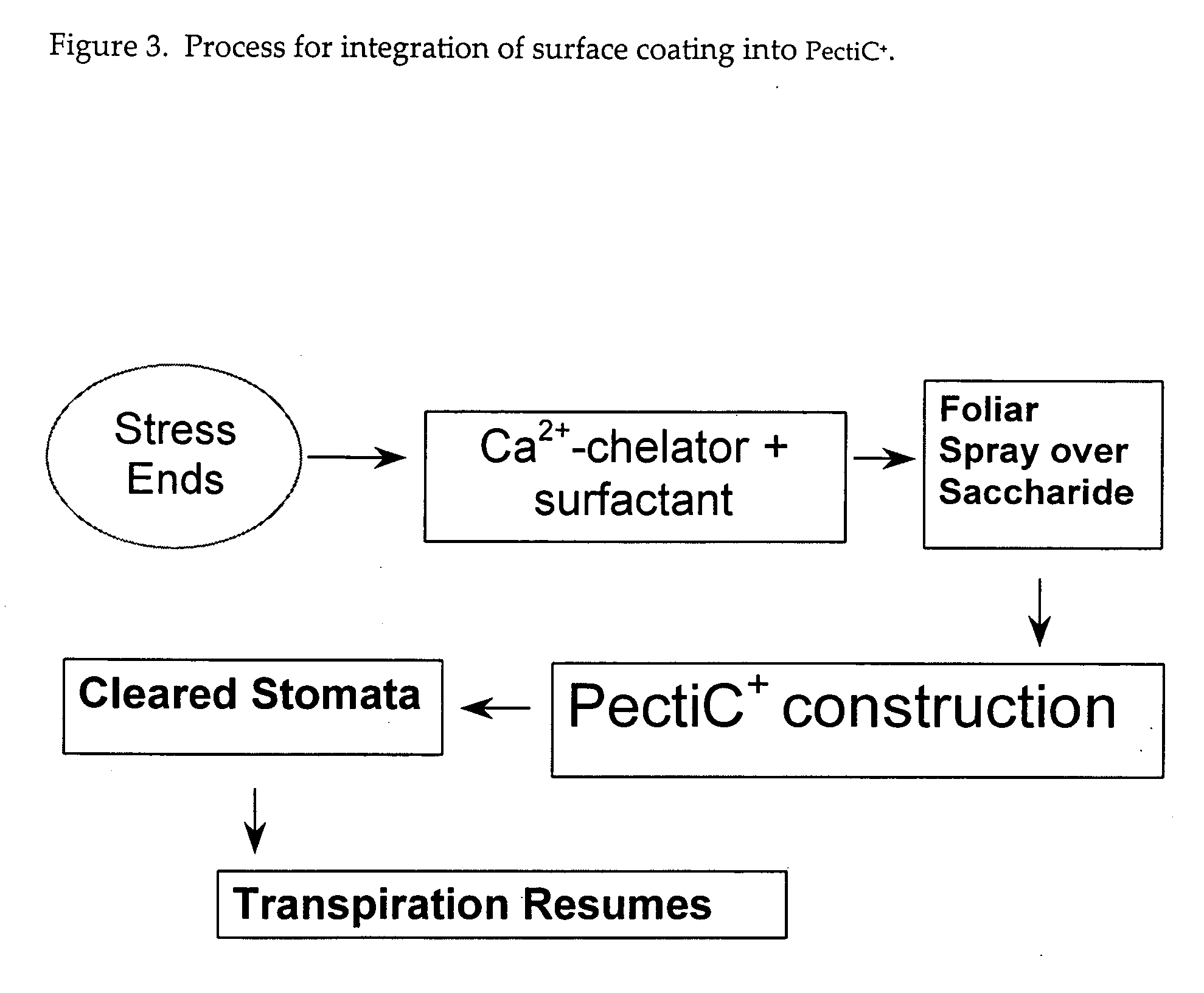Compositions and methods for anti-transpiration in plants
a technology of pectin and compounds, applied in the field of pectin nanotechnology, can solve the problems of limited in vivo application, loss of plant productivity, growth retardation, etc., and achieve the effects of enhancing effect, facilitating systemic metabolism, and enhancing
- Summary
- Abstract
- Description
- Claims
- Application Information
AI Technical Summary
Benefits of technology
Problems solved by technology
Method used
Image
Examples
example 1
Dry Formulation
[0098]
ComponentGramsiron-Mac40 gammonium phosphates24 g
The dry formulation from Example 1 is applied by crop duster to 0.1 hectare containing approximately 2,000 plants. Calculation of the application is based on a minimum of 0.2 g of dry mixture per plant. Alternatively, the dry mixture may be applied to the plant soil directly and then watered in to the roots with irrigation. The concentration of soluble iron of the dry formulation is approximately 1%, which, when applied to the soil directly, is well above the normally distributed concentration of agricultural field treatments.
example 2
Liquid Formulation
[0099]
ComponentAmountiron-Mac100 grams ammonium phosphate 3 gramsIndican10 gramsEOPO Surfactant50 grams
Add 20 ppm iron-Mac into water supply. Apply a volume of the liquid formulation sufficient to be evenly distributed to the roots, between about 0.1 ml to 10 ml per plant. The diluted aqueous liquid formulation is about 3× to 10× the normally distributed concentration of conventional agricultural field treatments.
example 3
Liquid Formulation
[0100]
ComponentAmountiron-Mac + zinc-Mac10Kurea100KTetramethylglucopyranose100grams
Apply the mixture, appropriately diluted in water, to 1 hectare of plants. Similarly, the diluted aqueous liquid formulation is substantially higher than the normally distributed concentration of conventional agricultural field treatments.
PUM
 Login to View More
Login to View More Abstract
Description
Claims
Application Information
 Login to View More
Login to View More - R&D
- Intellectual Property
- Life Sciences
- Materials
- Tech Scout
- Unparalleled Data Quality
- Higher Quality Content
- 60% Fewer Hallucinations
Browse by: Latest US Patents, China's latest patents, Technical Efficacy Thesaurus, Application Domain, Technology Topic, Popular Technical Reports.
© 2025 PatSnap. All rights reserved.Legal|Privacy policy|Modern Slavery Act Transparency Statement|Sitemap|About US| Contact US: help@patsnap.com



